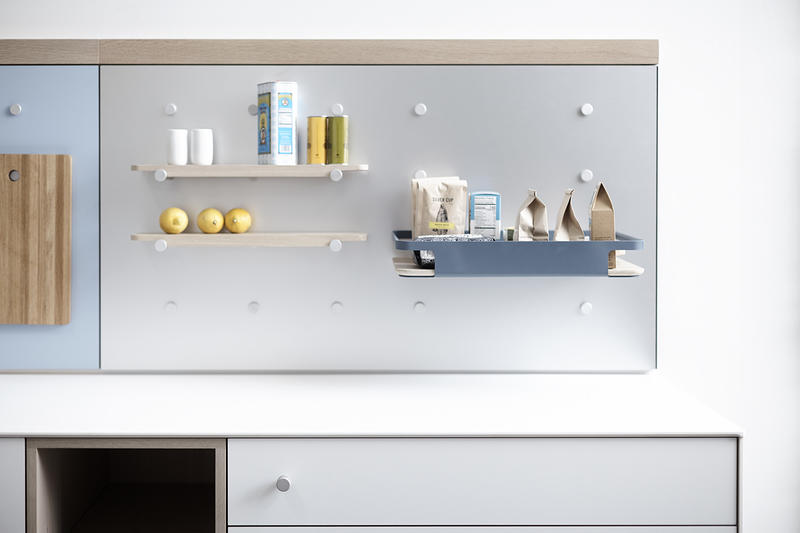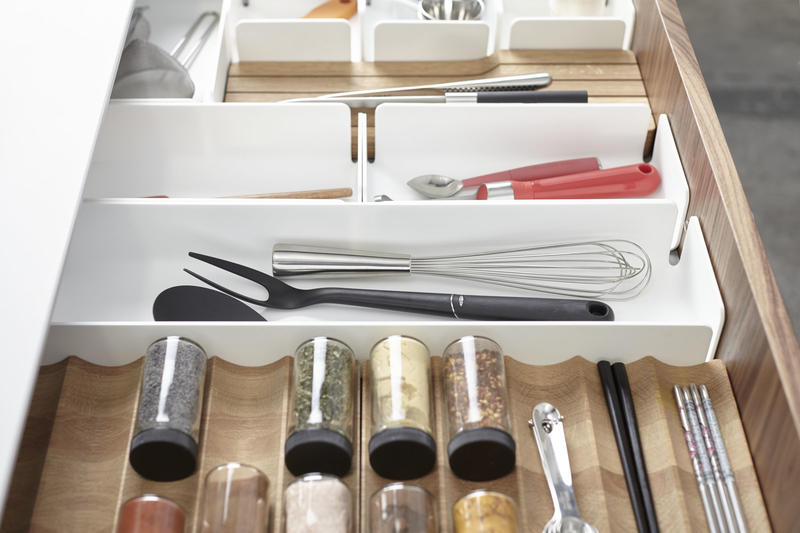If IKEA is at one end of the spectrum of custom kitchen design, then Henrybuilt, with its rich wood finishes and intricate drawer inserts, is at the other. But what falls in the middle?
Historically, not much. As far as midrange custom cabinetry goes, options have been pretty scarce. Scott Hudson, the CEO of Henrybuilt, has long been aware of the gap in the market and has been endeavoring to create a more affordable yet still high-quality choice since 2005. Today, he launches Space Theory, a new company that he hopes will bring performance kitchens to a wider audience.

“We’ve had a lot of demand over the years for the same kind of systematic approach that Henrybuilt offers, but at a lower, more accessible price,” Hudson tells Business of Home. “We’ve been experimenting for a really long time. How do you create something that’s well made and provides a high level of performance—that is simultaneously affordable but also profitable?”
The key, it turned out, was creating a software program. Hudson brought in a software team at the company’s Seattle office and they have spent five years perfecting a program similar to (though a bit more user-friendly than) AutoCAD. The software allows users to design a kitchen using Space Theory’s range of products, which are visually similar to the Henrybuilt offerings, though they’re made of more budget-friendly materials. Instead of stainless steel finishes, for example, Space Theory offers aluminum.
In addition to the less costly materials, giving users the capability to create the space themselves cut the cost of the service way down, as Space Theory doesn’t have to pay its own designers to collaborate on the projects as it would for a Henrybuilt kitchen. Someone from Space Theory is still reviewing the designs when they’re submitted, to make sure everything is feasible before it’s produced, but the DIY nature of the site allows for a much smaller staff.

As you add features in the design engine, you can also see the price of the project, creating a level of transparency that Hudson hopes will appeal to architects and designers, as it enables them to present the plan to clients with a fixed, precise cost. It’s a feature that will likely also please homeowners working without a designer, as they can create their kitchen to an exact budget.
“Right now, we work with hundreds of architecture firms who have a variety of projects. Many of them are lower budget, and giving them a tool that gives them immediate control so that they can quickly design a kitchen and see how much it will cost is a huge way to shorten that path,” says Hudson.
Stylistically, while there are fewer wood and metal finishes than Henrybuilt offers, there are actually more flat color options available on Space Theory. “There’s still a lot of leeway to get a lot of different aesthetics, but you’re doing it with a palette that’s not made up of such expensive materials,” says Hudson.
Once the kitchen is designed and approved by Space Theory, the cabinets are shipped with each unit pre-assembled (“doweled, glued and screwed,” says Hudson), with fronts and pulls already installed. Hudson compares configuring the cabinets to playing with Legos—while there’s room for creativity, there are still only a few ways the blocks can go together. The cabinets are finished with 2K polyurethane, an incredibly durable wood finish, and Hudson claims that users could pour three inches of concrete on top and the cabinet would hold up.
“We know a lot about this custom thing,” he says. “In terms of the base level quality of both materials and construction, Space Theory is better than 99 percent of custom cabinets. There may be a custom cabinetmaker somewhere in the country that has something similar, but I don’t think so. The quality we’re offering is better than what you can get from a custom maker.”




























